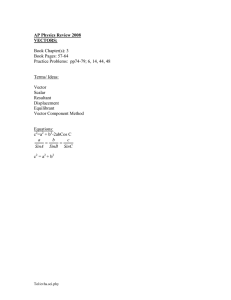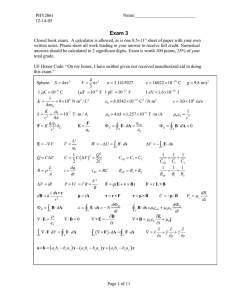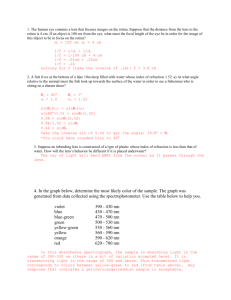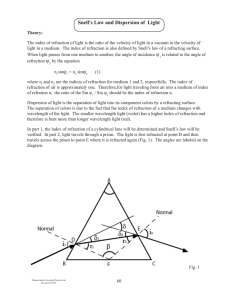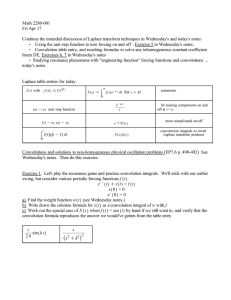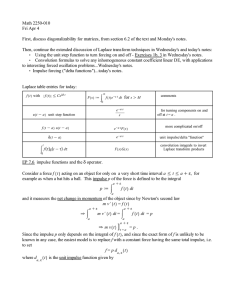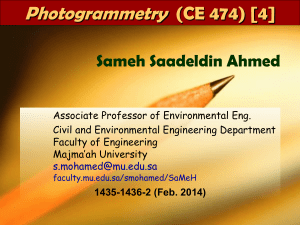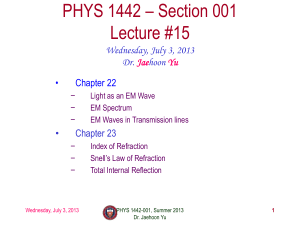Waves/Optics AP Physics Review 2008
advertisement
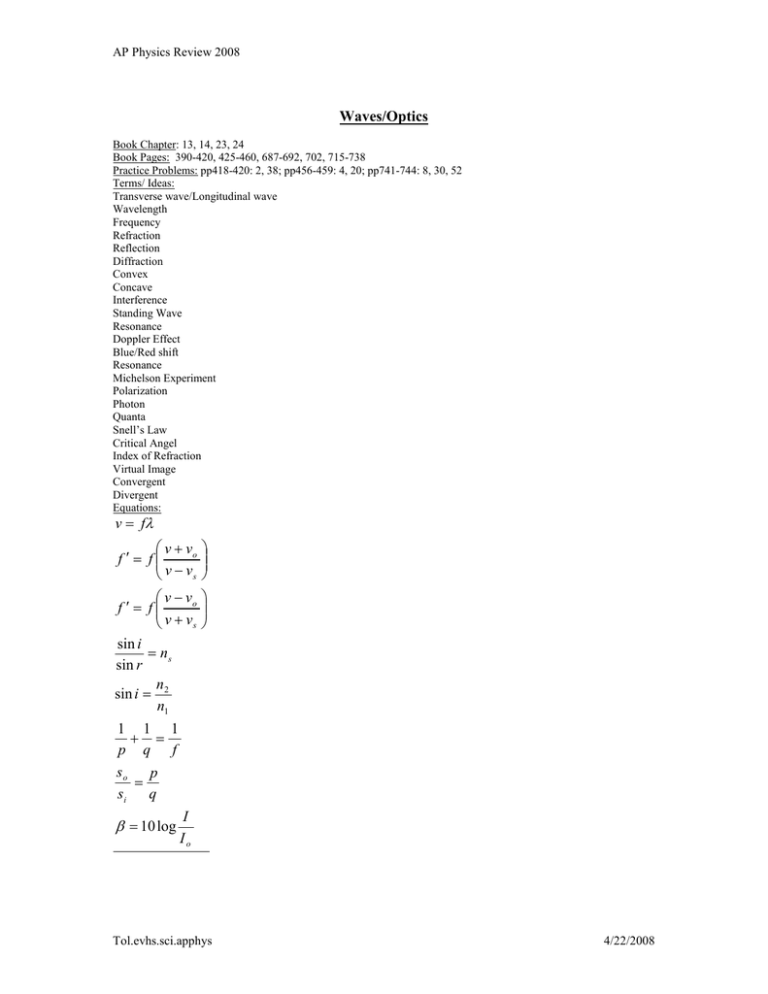
AP Physics Review 2008 Waves/Optics Book Chapter: 13, 14, 23, 24 Book Pages: 390-420, 425-460, 687-692, 702, 715-738 Practice Problems: pp418-420: 2, 38; pp456-459: 4, 20; pp741-744: 8, 30, 52 Terms/ Ideas: Transverse wave/Longitudinal wave Wavelength Frequency Refraction Reflection Diffraction Convex Concave Interference Standing Wave Resonance Doppler Effect Blue/Red shift Resonance Michelson Experiment Polarization Photon Quanta Snell’s Law Critical Angel Index of Refraction Virtual Image Convergent Divergent Equations: v = fλ v + vo f ′ = f v − vs v − vo f ′ = f v + vs sin i = ns sin r n sin i = 2 n1 1 1 1 + = p q f so p = si q β = 10 log I Io Tol.evhs.sci.apphys 4/22/2008 AP Physics Review 2008 Free Response: A point source S of light is located on the bottom of a swimming pool filled with water to a depth of 1.0 meter, as shown below. The index of refraction of water is 1.33 for this light. Point P is located on the surface of the water directly above the light source. A person floats motionless on a raft so that the surface of the water is undisturbed. P 1.0 m Pool Bottom S 1) Determine the velocity of the source’s light in water. 2) On the diagram above, draw the approximate path of a ray of light from the source S to the eye of the person on the raft. It is not necessary to calculate any angles. 3) Determine the critical angle for the air water interface. Suppose that a converging lens with a focal length 30 cm in water is placed 20 cm above the light source, as shown in the below diagram. An image of the light source is formed by the lens. 4) Calculate the position of the image with respect to the bottom of the pool. P Air Water n=1.33 1.0 m 20cm S Tol.evhs.sci.apphys 4/22/2008


